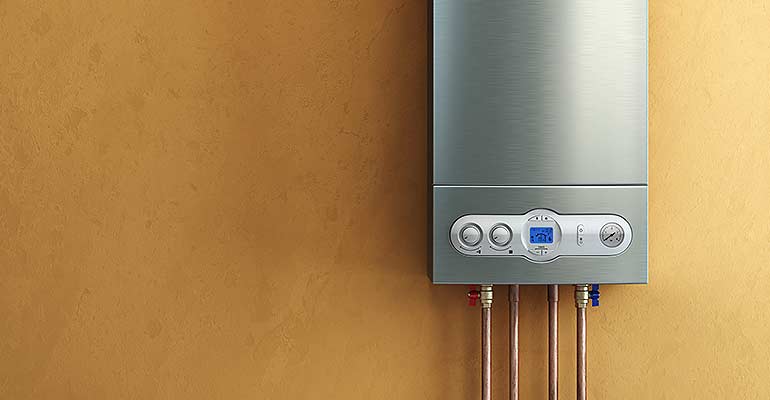Easy Guide to Caring for Your Home's Hot Water SystemSteps to Successfully Care for Your Home's Hot Water System
Easy Guide to Caring for Your Home's Hot Water SystemSteps to Successfully Care for Your Home's Hot Water System
Blog Article
Just about everyone will have their personal concepts about Tips For Maintaining Your Hot Water Heater.
:max_bytes(150000):strip_icc()/tankless-hot-water-system-in-the-basement-of-a-green-technology-home-529577258-77afda16fd494c6899a78000888c3204.jpg)
Hot water is vital for day-to-day convenience, whether it's for a revitalizing shower or washing dishes. To ensure your hot water system runs effectively and lasts much longer, normal upkeep is key. This short article offers functional ideas and understandings on exactly how to keep your home's warm water system to prevent interruptions and expensive repair services.
Introduction
Preserving your home's hot water system might seem difficult, but with a few simple actions, you can guarantee it runs efficiently for several years ahead. This overview covers every little thing from comprehending your hot water system to DIY upkeep ideas and knowing when to employ professional help.
Relevance of Keeping Your Warm Water System
Normal upkeep not just prolongs the life expectancy of your hot water system however also ensures it operates successfully. Disregarding upkeep can cause reduced effectiveness, higher energy bills, and also early failure of the system.
Indicators Your Warm Water System Requirements Maintenance
Knowing when your warm water system needs focus can avoid major concerns. Watch out for signs such as inconsistent water temperature level, odd noises from the heater, or rusty water.
Purging the Water Heater
Purging your hot water heater eliminates sediment build-up, boosting effectiveness and prolonging its life.
Monitoring and Changing Anode Rods
Anode rods prevent deterioration inside the storage tank. Examining and replacing them when worn is essential.
Complex Concerns Needing Specialist Help
Instances include significant leaks, electric problems, or if your hot water heater is consistently underperforming.
Regular Expert Maintenance Conveniences
Expert maintenance can consist of comprehensive examinations, tune-ups, and guaranteeing conformity with security standards.
Examining and Readjusting Temperature Setups
Changing the temperature level settings ensures ideal performance and security.
DIY Tips for Upkeep
You can perform numerous upkeep tasks on your own to keep your warm water system in top condition.
Checking for Leakages
Regularly inspect pipes and links for leakages, as these can result in water damage and higher expenses.
Understanding Your Warm Water System
Prior to diving into upkeep tasks, it's practical to understand the fundamental parts of your hot water system. Normally, this includes the water heater itself, pipelines, anode rods, and temperature level controls.
Month-to-month Maintenance Tasks
Routine month-to-month checks can assist capture small issues prior to they rise.
Evaluating Stress Alleviation Valves
Testing the pressure relief valve guarantees it works correctly and avoids extreme stress buildup.
Protecting Pipes
Shielding hot water pipes lowers heat loss and can save energy.
When to Call an Expert
While DIY upkeep is valuable, some concerns call for specialist experience.
Final thought
Routine upkeep of your home's warm water system is necessary for performance, long life, and price savings. By complying with these ideas and recognizing when to look for professional help, you can guarantee a reputable supply of warm water without unanticipated interruptions.
How to Maintain an Instant Hot Water Heater
Before tinkering with your hot water heater, make sure that it’s not powered on. You also have to turn off the main circuit breaker and shut off the main gas line to prevent accidents. Also turn off the water valves connected to your unit to prevent water from flowing into and out of the appliance. 2. When you’re done, you have to detach the purge valves’ caps. These look like the letter “T” and are situated on either side of the water valves. Doing so will release any pressure that has accumulated inside the valves while at the same time avoid hot water from shooting out and burning your skin. 3. When the purge valves’ caps are removed, you have to connect your hosing lines to the valves. Your unit should have come with three hoses but if it didn’t, you can purchase these things from any hardware or home repair shops. You can also get them from retail stores that sell water heating systems. Read the user’s manual and follow it to complete this task properly. When the hosing lines are connected, open the purge port’s valves. 4. You should never use harsh chemical cleaners or solutions when cleaning your unit. Make use of white vinegar instead. It should be undiluted and you’ll probably use about 2 gallons. 5. Now flush your water heater. This task should probably take about 40 minutes. We can’t give you specific directions for this because the procedure is carried out depending on the type, model and brand of your heater. With that being said, refer to the user’s manual. 6. When you’re done draining the unit, you have to turn off the purge port valves again. Remove the hosing lines that you earlier installed on each of the water valves. Put the valve caps (purge port) back in their respective places and be very careful so as not to damage the rubber discs that are found inside these caps. 7. Now that everything’s back in place, check your user’s manual again to find out how to reactivate your water heating system. 8. Once it is working, turn one of your hot water faucets on just to let air pass through the heater’s water supply pipes. Leave the tap on until water flows smoothly out of it. https://www.orrplumbing.com/blog/2014/september/how-to-maintain-an-instant-hot-water-heater/

We are very taken with How to Maintain a Hot Water Heater in a Few Simple Steps and I am praying you liked the new blog posting. Those who liked our page kindly don't forget to share it. Thanks for your time. Revisit us soon.
Call Today Report this page